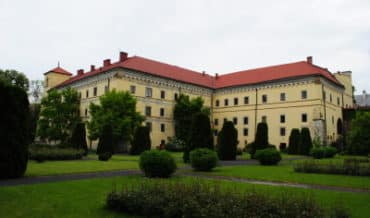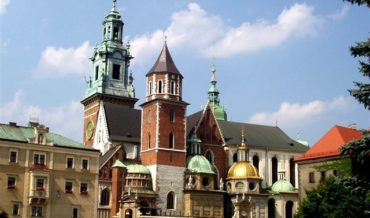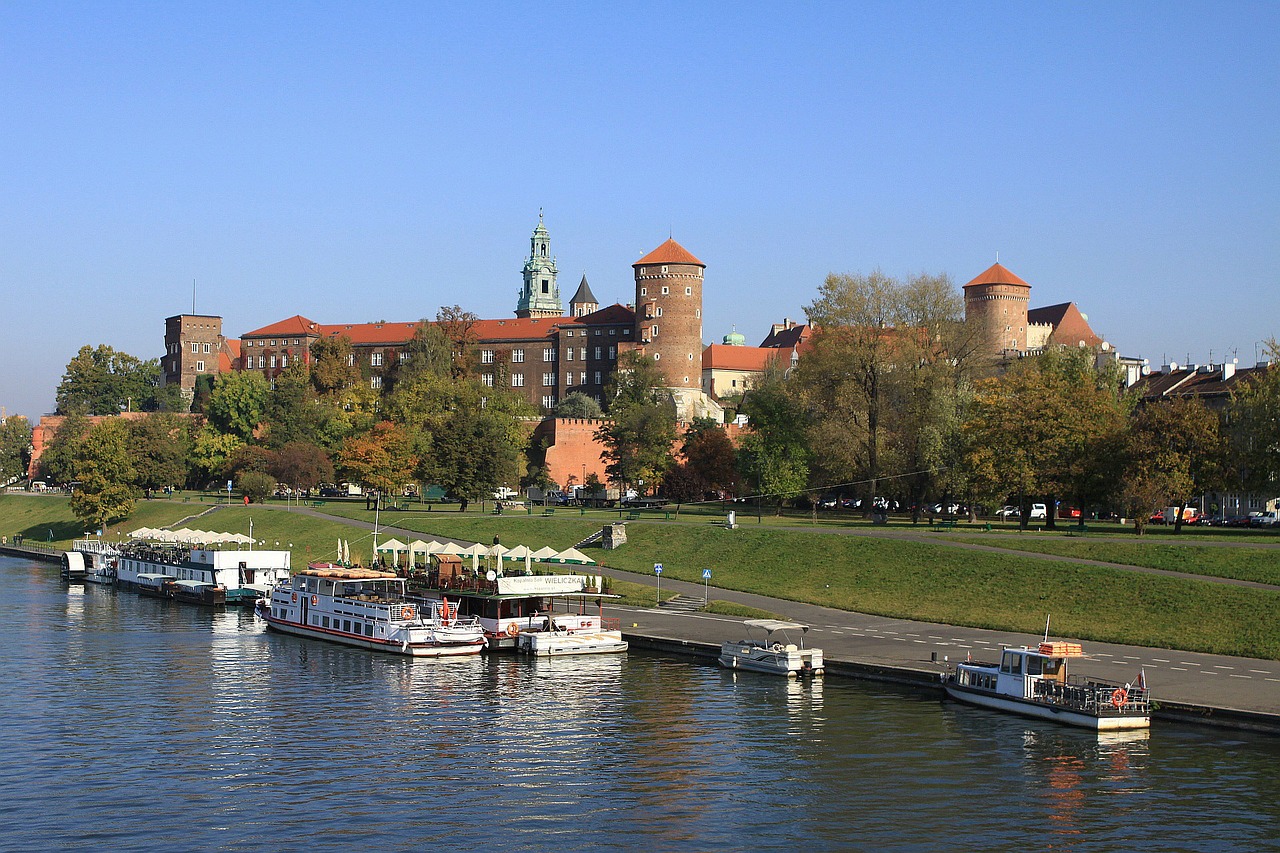There was no room for a palace in the urban concept of Krakow. It was a building that was contrary to the assumptions of the founding city, limited by defensive walls, where every square meter of area was worth its weight in gold. The thirteenth century urban planner divided the city into equal plots, assuming that all tenement houses would be of approximately the same size. The development of the city, however, went in a different direction, some plots were divided, others joined, and the appearance of the streets differed, as did the number of house owners. The term “palace” appeared in the renaissance. Representatives of powerful magnate families, owners of nearby castles, lords of Wiśnicz, Tęczynek, Pieskowa Skała, tied with offices to Wawel, wanting to be closer to the royal court, and not being able to live on the Wawel Hill itself, at all costs wanted to live at least within Krakow. Thus, two or three tenement houses were bought from the townspeople and altogether them into one whole, which after the reconstruction turned into a representative magnate seat. It was a time when the pride and vanity of nobles grew to gigantic proportions. And I think it was then that the proverb “pledge yourself and put yourself up”. After the reconstruction, the bourgeois houses became palaces in the full sense of the word: multi-window facades, huge passage halls with guardhouses full of hajduk, with courtyards decorated with cloisters, fountains, sculptures. In the city palace, the most magnificent was the first floor, i.e. the piano nobile. Reception lounges were grouped here, balls were organized here, and guests were received. Booths, bedrooms, children’s rooms and servants’ rooms were located above. Often in palaces of that time there were already kitchen lifts and bathrooms. Along with the relocation of the royal residence to Warsaw, the palaces began to decline, and the Swedish Deluge in the mid-17th century caused exceptional damage. The troops of Karol Gustaw that took Krakow, robbed tires, tapestries, marble fireplaces – everything fell victim to the invaders. On the outskirts of 19th-century Krakow, palaces and manors were built, which today are often in the city center, but there is no trace of parks and gardens.
Suggested
Suggested contents and articles.
Suggested Contents
Flows through the city from the west to the east, below Kraków turns north-east. Flowing through the eastern end of the Grzbiet Tęczyński , it creates a amazing ravine. During a low water level, 26 cubic meters of water flow down the Vistula per second, during an average state of
- Knowledge Base
- February 10, 2021
Contents1 Archaeological Museum of Krakow1.1 Swiatowid – the Zbruch Idol1.2 Permanent exhibition2 Collection of Egyptian antiquities2.1 Polish Army field museum in Egypt3 Branches of the Archaeological Museum4 Visit the Archaeological Museum of Krakow4.1 4.2 Main building of the Archaeological Museum4.3 St. Adalbert Church4.4 Branch in Nowa Huta The Archaeological Museum of
- Museums
- October 25, 2016
Contents1 History of the Cathedral2 The architecture3 Interior of the Cathedral3.1 Mausoleum of St. Stanislaw, Polish patron4 Crypt in the Wawel Cathedral4.1 Royal tombs of the Wawel Cathedral5 Visit the Wawel Cathedral History of the Cathedral The Cathedral on the Wawel Hill is a place of worship of top significance. It
- Attractions
- October 7, 2016
Contents1 Wawel Castle history1.1 The pearl of Renaissance1.2 Wawel Castle sword2 Wawel Castle Cathedral3 Wawel Castle Dragon4 Wawel Castle tickets and opening hours5 Wawel Castle Map Wawel Castle is located on Wawel Hill in Krakow, ancient capital of Poland. Wawel Castle had been the residence of Polish kings for centuries
- Attractions
- October 5, 2016
Comments
All comments.
Comments


